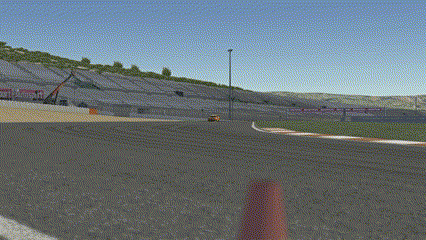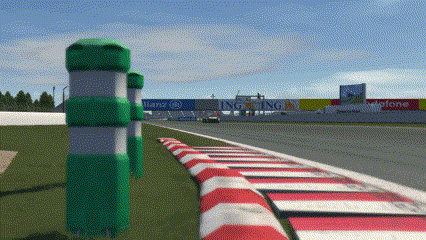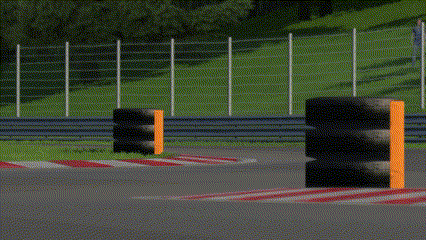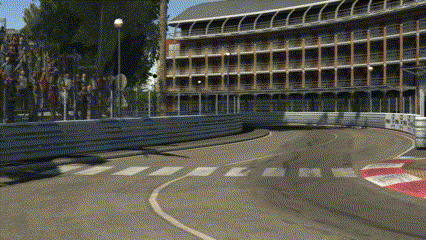The Shape of Touring Car Racing
World Touring Cars, what kept/keeps going wrong?
Cover Image: TCR Virtual @ Pau
The Shape of Touring Car Racing
World Touring Cars, what kept/keeps going wrong?
Cover Image: TCR Virtual @ Pau
With the announcement of the TCR World Tour, I thought it was worth a look back at the troubled history of major international touring car racing. When looking locally, it’s not difficult to find successful series. Australia may have only had two consistent brand entries, but they have always provided full grids and “close” racing. Germany has the DTM which, although it has a tendency to waiver, is at heart, a touring car championship (one that uses prototypes and GT3?). And then there is the pinnacle of touring car success, the BTCC. While manufacturer involvement has come and gone, the series has always had a healthy and competitive grid (small dip in the early 2000s aside) going back to 1958. When it comes to international racing, rarely has a series survived in a healthy state for more than a few years. With regards to “global touring cars” I will be combining World and European touring cars as the ETCC would often be the predecessor of the WTCC/WTCR.
1963-European Touring Car Challenge
The first attempt at international racing began in a rather complicated affair. 8 rounds, some of which were Hill climbs, not races, 9 different classes of car, which would not always race at the same time and five drivers on the same points at the end of the year. In the end Peter Nocker and his Jaguar Mk II would be declared champion. The series would enjoy the same positives and negatives of the BTCC at the time. A class structure that was confusing to follow but with the upside of watching large engine land-yachts like the Mustang and Jaguars racing tiny super-minis such as the Mini. While the series would typically run to the FIA Group 2 “Modified/Improved Series Production” regulations, they would briefly allow the entry of Group 5 “Special Touring Cars” for 1968 &1969. During this time the Spa 24 hours would become a semi-regular fixture on the calendar. While not always a championship round, it would remain a touring car race until 2001 when it switched to GT cars.
Jaguar Mk2 @ Zandvoort
1970-European Touring Car Championship
The series would be renamed to become the first European Touring Car Championship and stick with an updated version of the Group 2 rules. The championship would be hit by the 1973 oil crisis and suffer from a reduction in entries for the next two years. The factory cars would return however and the following years would be dominated by the battle between Ford, with its Capri, and BMW, with its 3.0 CSL
1982-Group A Arrives
Group 2 would be replaced by the new Group A regulations. This would lead to a golden period of touring car racing. As the Group A rules were adopted by touring car series across the world, the incentive for manufacturers to build their own racer grew. And the ETCC would be the most prestigious series for that class. Jaguar, Rover, Ford, BMW, Alfa Romeo, Nissan, Toyota, Holden and even Volvo took part. The Group A era would result in some iconic touring cars, such as the mighty Nissan Skyline GTR (Godzilla) and the always sideways Ford Sierra Cosworth RS500
1987-The Downfall
As with all periods of greatness, it must come to an end. As is typical when manufacturers enter en-masse, costs began to spiral. This was not helped by the addition of "evolution" cars from BMW and Ford which effectively turned the series into a two horse race. Things would then be complicated by the creation of the first World Touring Car Championship in 1987. This would be the only running of the original WTCC. An entry fee of $60,000 turned away many teams, with only 15 cars entered for the championship proper. A year full of penalties and technical infringements followed, with the championship itself would not be settled until March of the next year. A poorly thought-out attempt to revive the old Procar series never got off the ground either (although we did get a V10 Formula 1 powered, mid-engine Alfa Romeo 164). Instead the WTCC was cancelled for 1988 and the ETCC whimpered on into 1988 before collapsing at the end of the year.
The Interim Years
1995-ITC
There would be no World or even European touring car championship during the 1990s. For the most part, this was substituted by the BTCC, enjoying its Super Touring heyday. The closest we would get to an international championship would be the ITC. For 1995, the DTM would incorporate a series of races outside of Germany under the title of International Touring Car Championship. For 1996 the two would become one. However, the traditional DTM teams were not fond of the massive increase in travel costs. Combined with the cost of the cars, now Class 1 (prototypes disguised as touring cars), and poor promotion and attendance, the series would fold at the end of 1996 with DTM not returning until 2000.

2000-The Return to Europe
The Italian Superturismo Championship would become the European Super Touring Cup. It would contest 10 rounds across Italy, Austria, Czech Republic, Hungary and Slovenia. It would be renamed the European Super Touring Championship for 2001

Honda Accord Super touring (VRC Gojira) @ Red Bull Ring
2002-The European Rebirth
Another rename in 2002, the series became the European Touring Car Championship and adopted the new Super 2000 rules. Competition was close and coupled with live TV broadcasts and the return of the manufacturers, the ETCC would go from strength to strength. The series would see brands such as BMW and Seat enter to go up against stalwarts Alfa Romeo and Honda. They would race in more countries, included the European nation of… the United Arab Emirates? As a result of its success, another rename would come about in 2005.

2005-The WTCC
Touring cars go global! The series would continue its growth. They would visit Macau for a championship round, as well as Qatar, Brazil, Russia, Thailand and the US to name a few. Seat would introduce a diesel-powered Leon which would claim the title in both 2008 and 2009. Chevrolet would then enter as the ruling force, wining the next 3 titles. The sport would enjoy unprecedented popularity, thanks in part to its availability on Eurosport, who showed every race live. Rule changes in 2011 allowed smaller turbocharged engines before becoming mandatory in 2012.

2014-TC1
The championship switched from the popular Super 2000 regs to the new TC1. This would mark the beginning of the decline of the WTCC. While impressive cars with close, entertaining racing, series chief Francois Ribeiro would later say that TC1 “have been either too far or not far enough as a technical regulation”. They would prove too expensive for most privateers and too simple for most manufacturers to deem worth spending on. While there were 4 brands involved at the start, the spending of the Citroen team would produce a dominant car that would often not race flat out to avoid embarrassment. After 3 consecutive titles with Jose Maria Lopez they would then pull out, along with Lada, leaving only Volvo and Honda as works entries. As a result, the championship organisers looked to the future of the series. After a brief and confusing flirtation with DTM-style Class 1 regs, a deal would be done to merge with another touring car championship, TCR International.

2015-TCR International Series
Founded by former WTCC manager Marcello Lotti, TCR was intended to be a cost-effective class of touring car with strict restrictions on car design and a BOP system to ensure widespread competitiveness. In just 3 years the series would grow to rival the WTCC in terms of participation. When rumours started about a possible merger between the two series Dutch driver Tom Coronel claimed, “I think it’s the best thing I’ve seen in the last ten years of motor racing.”

2018-WTCR
The merger of TCR international and WTCC would create the new World Touring Car Cup, WTCR. Each weekend would consist of 3 races and a maximum of 26 cars. Manufacturers would be permitted to build cars but not officially enter teams, all cars must be run by privateers. The first season would see 46 drivers compete throughout the season with the title being fought by touring car royalty in Yvan Muller and Gabriele Tarquini, the Italian winning by 3 points. This is unfortunately as good as it got for WTCR.
Over the following years the sport would become increasingly political. While all teams were technically private, many were acting as pseudo works entries. This meant that arguing among teams became common, especially with regards to BOP. Some teams would deliberately hold back to “gain the system”. This would result in races with little overtaking, and qualifying sessions were only some cars were trying. This led both Hyundai and Lynk & Co to pull their entries at various points.
In addition to the internal politics, global events would also hamper the series. Like most series in 2020, WTCR had to scale back. Only 5 tracks, 6 rounds were held, all in Europe. Things would improve in 2021 & 2022, but the series was still dealing with cancellations and changes at a time that other racing series had stabilised their calendars. The series also failed to return to markets outside of Europe, with the exception of three races in Russia, and the Middle East. With most of the manufacturers in the series being Asian there was also concerns about their long-term commitment to the series without home races. With a number of tyre issues in 2022, leading to the cancellation of the German round (at the fan favourite Nürburgring), and a grid size of only 12 cars the decision was made to end the WTCR.

2023-TCR World Tour
A more convoluted attempt at a world championship so I’ll link to an article from Touring Car Times explaining it more. Essentially, TCR World Tour will consist of a series of races from regional TCR series, culminating in a 4 day “play-off”.
Conclusion
Throughout its history, International touring car racing has had its fair share of highs and lows, more so than some series. It’s always easy to accuse the manufacturers of ruining everything, especially as they always seem to precede the collapse of the series, but I would call this unfair. This is especially puzzling as a Brit, who has the pleasure of a strong and stable national series in the BTCC. They regularly have a healthy grid of ~30 cars, all built by privateers. Yet there are manufacturers involved and the cars are bespoke to the UK. With WTCR the cars were “off the shelf” products, so costs should have been minimal. A well-regulated BOP should have ensured fair competition. The overriding problem with World Touring cars I think has been the inability to safely grow. In the eighties, manufacturers were allowed to overspend on a European series at a point where the organisers tried to go global. The same was true of ITC, an expensive car concept suddenly with the increased cost of international travel. This mistake was then made again in 2016 with TC1. While WTCR attempted to solve this with BOP, it did so in a way that left room for teams to exploit for personal benefit. In later years, the track selection for WTCR did not help its case. While tracks like Pau and Macau are historic locations, tracks like Jeddah, Bahrain and Sochi did little to make the cars look exciting. Both the BTCC and V8 Supercars in Australia race at car-appropriate tracks that show the best in their cars, WTCR did not.
TCR World Tour appears to be making some of the same problems as before with races at Spa (although I appreciate the historic element), Portimão and Bathurst not screaming touring cars.
I hope it works, and by incorporating local series into the calendar then that surely gives it some protection. Global Touring Car racing has been pursued for decades, giving us some classic moments, such as the end of the 2010 Monza race, or Priaulx’s last lap defending in Marrakesh the same year. It has entertained us for years and deserves better than it has received in recent years.